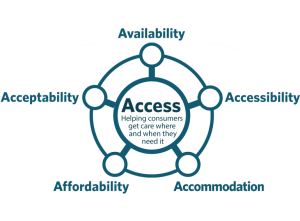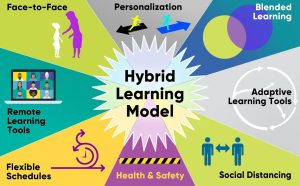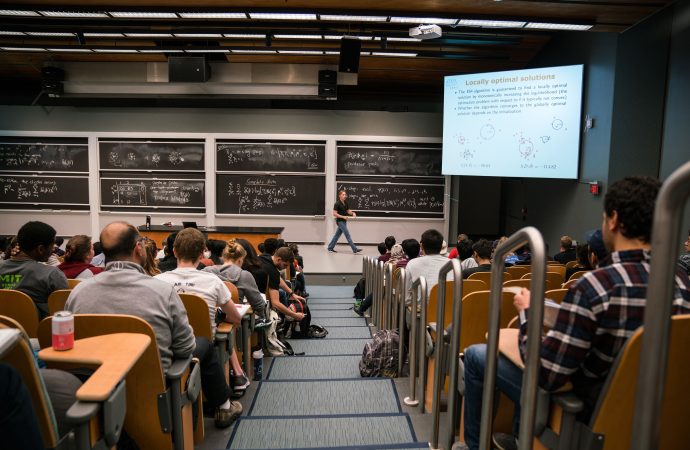Introduction: In the dynamic realm of Higher Education Trends continuously evolve, reflecting societal shifts, technological advancements, and educational philosophies. In this article, we delve into the transformative trends shaping higher education, exploring how institutions navigate the intersection of tradition and innovation. Higher Education Trends: Bridging Worlds: Technology has revolutionized the educational landscape, facilitating remote learning,
Introduction:
In the dynamic realm of Higher Education Trends continuously evolve, reflecting societal shifts, technological advancements, and educational philosophies. In this article, we delve into the transformative trends shaping higher education, exploring how institutions navigate the intersection of tradition and innovation.
Higher Education Trends: Bridging Worlds:

Image by: Yandex
Technology has revolutionized the educational landscape, facilitating remote learning, personalized instruction, and data-driven insights. Higher Education Trends and Institutions must adeptly integrate technology to enhance pedagogy while ensuring equitable access for all students. Diversity, equity, and inclusion are pivotal in fostering a supportive educational ecosystem. Embracing diverse perspectives enriches learning experiences, preparing students to thrive in an interconnected world.
Adapting to Globalization:
Higher Education Trends and globalization transcends geographical boundaries, prompting institutions to cultivate global competencies among students. Collaborative partnerships, study abroad programs, and multicultural curricula prepare graduates to navigate diverse cultural contexts. Environmental sustainability is increasingly prioritized within higher education. Institutions are implementing eco-friendly initiatives, integrating sustainability into curricula, and fostering a culture of environmental stewardship among students.
Addressing Mental Health and Well-being:
Higher Education Trends and the well-being of students is paramount, with institutions prioritizing mental health support services and wellness initiatives. Cultivating a supportive campus community fosters resilience and enhances academic success. Traditional teaching paradigms are evolving, with educators embracing experiential learning, project-based assessments, and interdisciplinary collaboration. Dynamic pedagogical approaches cultivate critical thinking, creativity, and adaptability among students.
Enhancing Accessibility and Affordability:

Image by: Yandex
Accessibility and affordability remain central concerns in higher education. Institutions are leveraging digital platforms, open educational resources, and financial aid initiatives to broaden access and mitigate financial barriers. Entrepreneurial thinking is increasingly valued, with institutions fostering innovation and creativity among students. Entrepreneurship programs, startup incubators, and experiential learning opportunities empower students to pursue innovative ventures.
Leveraging Data Analytics for Decision-Making:
Data analytics inform strategic decision-making within higher education, guiding enrollment management, resource allocation, and student support initiatives. Harnessing data insights optimizes institutional effectiveness and student success. In a rapidly evolving knowledge economy, lifelong learning is essential. Institutions are promoting continuous skill development, professional certifications, and lifelong learning pathways to support career advancement and personal growth.
Embracing Hybrid Learning Models:

Image by: Yandex
Higher Education Trends and the hybrid learning models blend online and in-person instruction, offering flexibility and accessibility. Institutions are reimagining course delivery, leveraging digital technologies to enhance learning outcomes and accommodate diverse student needs. Higher education institutions play a pivotal role in promoting civic engagement and social responsibility. Service-learning initiatives, community partnerships, and advocacy efforts empower students to effect positive change in society.
Conclusion:
As higher education evolves, institutions must navigate complex challenges and embrace transformative opportunities. By fostering innovation, inclusivity, and lifelong learning, higher education continues to bridge worlds, empowering individuals to shape a brighter future. Regulatory frameworks shape higher education policies and practices, posing challenges for institutions. Navigating compliance requirements, accreditation standards, and legislative changes necessitates strategic planning and institutional agility.
Frequently Asked Questions (FAQs)
How do higher education institutions adapt to technological advancements?
Higher education institutions adapt to technological advancements by integrating digital tools into pedagogy, offering online learning options, and fostering digital literacy among students and faculty.
What initiatives support mental health and well-being on college campuses?
Colleges support mental health and well-being through counseling services, wellness programs, peer support groups, and awareness campaigns aimed at reducing stigma and promoting self-care.
How can students access financial aid for higher education?
Students can access financial aid for higher education through federal grants, scholarships, work-study programs, and student loans. FAFSA (Free Application for Federal Student Aid) is a common application used to determine eligibility for financial aid.
What role does sustainability play in higher education?
Sustainability plays a vital role in higher education, with institutions implementing eco-friendly practices, integrating sustainability into curricula, and promoting environmental stewardship among students.
How do hybrid learning models benefit students?
Hybrid learning models offer flexibility and accessibility, allowing students to engage in both online and in-person instruction. These models accommodate diverse learning styles and preferences, promoting active participation and engagement.
How can higher education institutions promote diversity and inclusion?
Higher education institutions promote diversity and inclusion through recruitment and retention efforts, multicultural programming, inclusive curricula, and support services for underrepresented student populations.
















